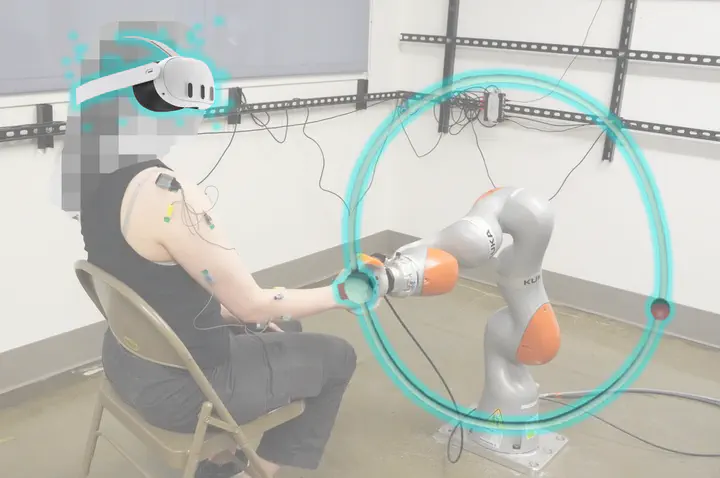 Rendering of AR interface and display under development for improved guidance of 6D rehabilitation tasks.
Rendering of AR interface and display under development for improved guidance of 6D rehabilitation tasks.Abstract
While post-stroke rehabilitation systems often support only planar motion, activities of daily living require exertion of end effector (i.e., hand) forces in all 6 degrees of freedom (3 translational, 3 rotational). Anand et al. 2025 presents a preliminary rehabilitation robot gaming platform enabling such 6-DoF rehabilitative motions, but the screen used in initial studies restricted prescribed tasks to combinations of only a few DoF that could be clearly and precisely displayed on a 2D surface.
A fully 3D environment has the potential to provide a more intuitive and effective way to visualize and guide 6-DoF trajectories. In this work, we propose a 3D augmented reality (AR) system to display complex trajectories for a user to follow during rehabilitation activities. Specifically, the proposed system will display the prescribed x/y/z movements and roll/pitch/yaw torques as an overlay on real-world space, aligned with the hand’s current position and configuration, allowing the user to see their exact movements in relation to the trajectory in real time, rather than using a virtual representation of their position. This approach aims to improve the clarity and accuracy of trajectory guidance during rehabilitation exercises. By enabling clearer and more intuitive visualization of movement trajectories, the 3D AR system has the potential to improve rehabilitation task delivery and efficacy. Future work will focus on refining the system’s usability, optimizing real-time feedback mechanisms, and conducting clinical evaluations to assess its effectiveness in improving patient outcomes.